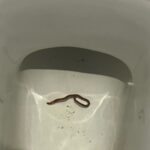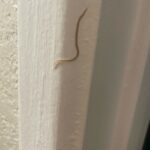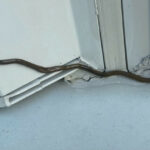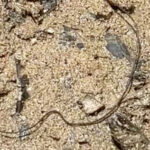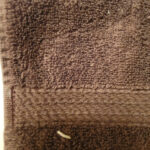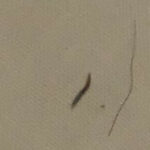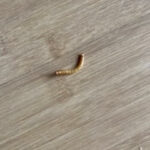Can earthworms live in mulch? The answer is: it depends on the type of mulch. Mulch made of inorganic materials such as plastic is not the ideal environment for worms. Although mulch made from plastic can retain moisture, it does not provide food for worms, nor does it provide the correct temperature. Worms need moisture, food, and the perfect temperature, meaning — an environment without excessive amounts of heat. Mulch made from organic materials such as leaves, plants, and dirt provide food, moisture, and the right temperature for worms to thrive.
About Worms
Worms can be found at just about every corner of the earth. They live in trees, in bark, and under rocks as well as along rivers and near springs, and ponds. Their favorite place to live, however, is in the earth’s rich soil. During the winter months they burrow deep within the earth until the surface warms again during the spring. During the warm summer months, worms stay closer to the tops of soil where they create tunnels to wiggle in and out of. These tunnels are extremely important for plant life as they create a path for water and air, which is essential for the survival of plant life.
While worms of all kinds can be found all over the world, especially earthworms (2,700 species), places like China, Australia, Greenland, and the Sahara Desert have their own indigenous species of worms. Besides the Sahara Desert, it is unlikely that you will find large numbers of worms living in “sandy” areas, especially sandy beaches. You see, the vast majority of worms on our planet can only survive under certain conditions.
For starters, worms have no lungs. This means, they breathe through their skin, so the worms environment and the worm’s skin must be moist at all times. This allows the worm to breathe in oxygen. While the sand may be moist and wet closer the water, the majority of the sand is dry. If the worm’s skin dries out, the worm will die from suffocation. In addition, too much moisture can also be detrimental to worms. If too much water is present, it takes the place of oxygen, which will cause the worms to flee to the surface. Once on the surface, worms will be exposed to sunlight. If worms remain in the sunlight for too long, they can become paralyzed.
Next, worms must remain close to their food supply. Worms feed off of leaves and dead grass which contain organisms that provide a healthy diet of bacteria, algae, and fungi to the worm. Worms feast on dirt as well, especially if they live deeper inside the earth. Worms also eat plants, fruits, and vegetables.
Believe it or not, worms do have mouths. Their mouths are actually big enough and powerful enough to grab a leaf and drag it around. They also have a pharynx, esophagus, crop, gizzard and intestine. When the worm eats its food, it pulls the materials into its mouth with the help of the pharynx and its prostomium (also called acron). This creates a suction motion. This suction motion aids in helping the worm consume large amounts of food in a sort amount of time. The gizzard grinds the food. Worms eat so much that they typically produce excrement equal to their own weight every 24 hours.
When it comes to reproduction, the worm’s environment plays an extremely important role as well. Worms prefer to mate or reproduce in warm moist soil and away from light, of course.
All About Worms is always free, always reader-supported. Your tips via CashApp, Venmo, or Paypal are appreciated! Receipts will come from ISIPP Publishing.



